Land Plants
1/191
There's no tags or description
Looks like no tags are added yet.
Name | Mastery | Learn | Test | Matching | Spaced |
|---|
No study sessions yet.
192 Terms
Characters
Any heritable trait possessed by an organism
Monophyletic Group
Ancestor and all descendants
Paraphyletic Group
Missing 1+ descendants
Polyphyletic Group
Missing an ancestor
Efficiency
Cost of digestion
Photosynthesis
The ability to make sugars from H2O + CO2 + E from the sun
Embryophyte
Any photosynthetic eukaryote that can survive and reproduce on land
Embryo
Multicellular organism derived through mitosis from a zygote
Gametangia
Sex cells of a plant
Archedonia
Female reproductive organs (gametangia) of a plant
Antheridia
Male reproductive organs (gametangia) of a plant
Cladogram
Dichotomously branching tree diagram built from a series of nested clades (monoplyletic group)
Clade
Group of organisms that includes a common ancestor and all of its descendants
Branches
Pop/lineage moving through time
Nodes
Part of cladogram where lineages separate at each node, populations combine to evolve and acquire new and different traits
Symplesiomorphy
Shared ancestral trait
Synapomorphy
Shared derived trait (used to identify clades)
Homologies
Similar traits present in organisms due to descent from common ancestor (inherited)
Homoplasy
Similar traits due to conversion evolution
Sister Group
Closest relatives to a given group in a cladogram
Gametophyte
Multicellular, haploid generation that contains specialized structures to produce gametes
Sporophyte
Multicellular, diploid generation that contains specialized structures to produce spores
Protoplast
Collective protoplasm throughout plant body
Cytoplasm
Living part of the cell excluding nucleus
Cytosol
Matrix of cytoplasm within which all organelles are suspended (nitrogen rich)
Cell Sap
Solution inside vacuole (H2O rich)
Vacuoles
Contribute to cell rigidity and growth, tonoplast + cell sap, about 90% of cell volume
Turgor Pressure
Force within cell that pushes cell membrane against cell wall caused by osmotic flow of H2O into vacuole
Plastid
General term for a group of organelles unique to plants (chloroplasts is one type)
Chloroplast Pigments
Chlorophyll A and B (reflect green light)
Chromoplast Pigments
Carotenoids, carotenes reflect orange light and xanthophylls reflect yellow light
Leucoplasts
Colourless plastids
Amyloplasts
Type of leucoplast that stores starch (in roots)
Elaioplasts
Type of leucoplast that stores lipids (seeds, anthers)
Etioplasts
Light deprived chloroplasts in suspension (happens when no light)
Alkaloids
Secondary metabolites (morphene, cocaine, nicotine)
Terpenes
Secondary metabolites (essential oils, taxol, rubber)
Phenols
Secondary metabolites (salycilic acid, tannins, lignin)
Cell wall
Encapsulates a conundrum
Cell wall rigid support
Prevents plasma membrane from rupturing under turgor pressure
Glycosides
Secondary metabolites (cardiac glycosides)
Cell wall flexible support
Cells expand cell wall to 100 - 1000x in length when developing
Cell wall selective barrier
Communication, antimicrobial, H2O impermeable if lignified
Cellulose
Chains of linked glucose molecules
Microfibrils
Formed by cellulose with crystalline lattice regions (micelles)
Macrofibrils
Formed by cellulose, numerous microfibrils linked together
Hemicellulose
Polysaccharide that binds to cellulose (forms in Golgi apparatus and is carried to site of cell wall formation in secretary vesicles)
Pectin
Polysaccharide that is hydrophilic and plastic (not rigid)
Glycoproteins
Sugar proteins that allow cell wall to extend
Middle lamella
Very pectin rich layer in cell wall
Primary wall (1°)
Forms in cells that are actively growing, between plasma membrane and middle lamella
Where is pectin found?
Primary wall
Where are glycoproteins found?
Primary wall
Where is cellulose found?
Primary and secondary walls
Where is hemicellulose found?
Primary and secondary cell walls
Where is lignin found?
Secondary cell wall
Are primary cell walls LAM or DAM
LAM
Are secondary cell walls LAM or DAM
DAM
Plasmodesmata
Holes in cell wall (40nm in diameter)
Pit Field
Cluster of 30-60 plasmodesmata
Pits
Gap in secondary cell wall that extend from pit-field
Pit membrane
Formed from middle lamella in primary cell wall, plasmodesmata of 2 adjacent cells
Pit parts
Two opposing pits and pit membranes
Meristem
Regions of actively dividing cells
Initial meristem
Continuously dividing cells (undifferentiated)
Derivative (Primary) meristems
Ground maritems (bulk), protoderm (outside “skin”), procambium (“plumbing” circulatory)
Apical
At the end
Parenchyma Characteristics
Many sided, thin walled (usually only primary cell wall), never lignified, LAM, occur in masses
Chlorenchyma
Specialized parenchyma fir photosynthesis, found immediately beneath epidermis
Anthoceratophyta
This phyla has no vascular tissue and no seeds, but unlike mosses and liverworts, its sporophyte grow as a single undifferentiated “horn”
Coniferophyta
This phyla has vascular tissue and seeds but no flowers. Many (but not all) of the plants within this phyla are trees; its seeds are most often borne in hard, woody structures called “cones”
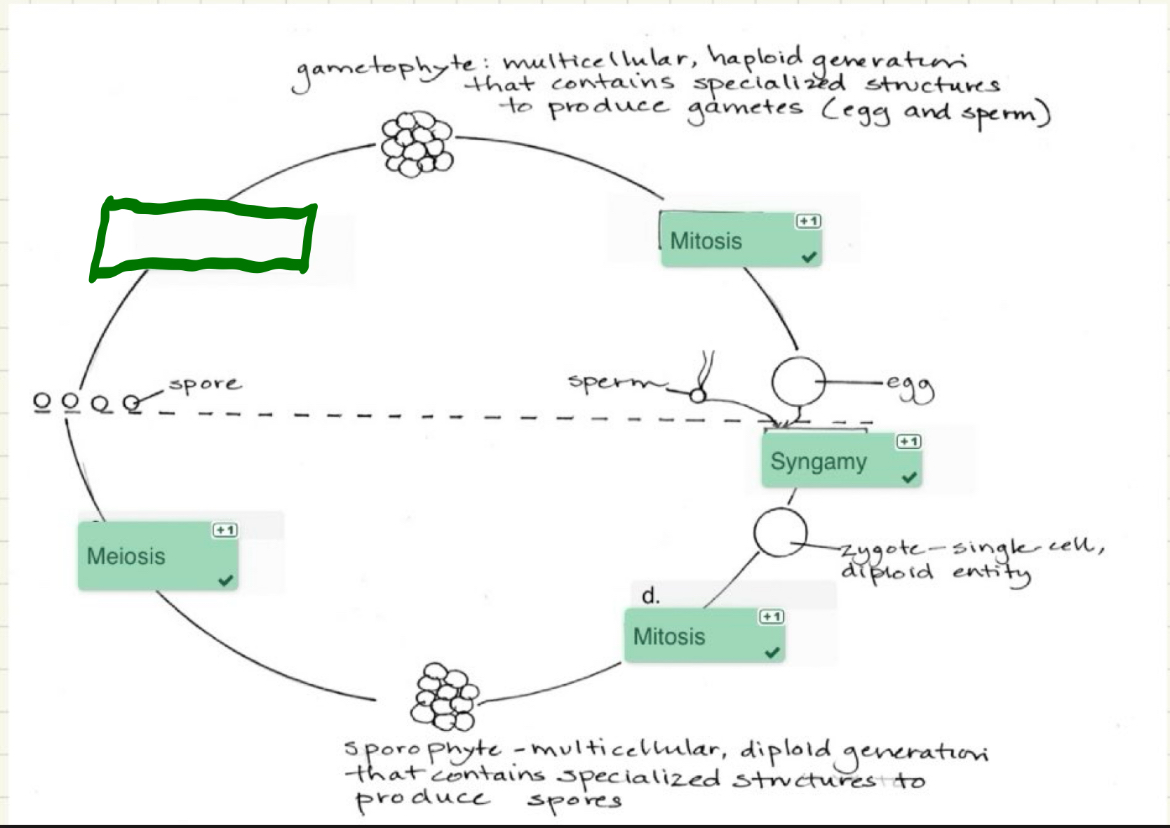
What term is missing here?
Mitosis
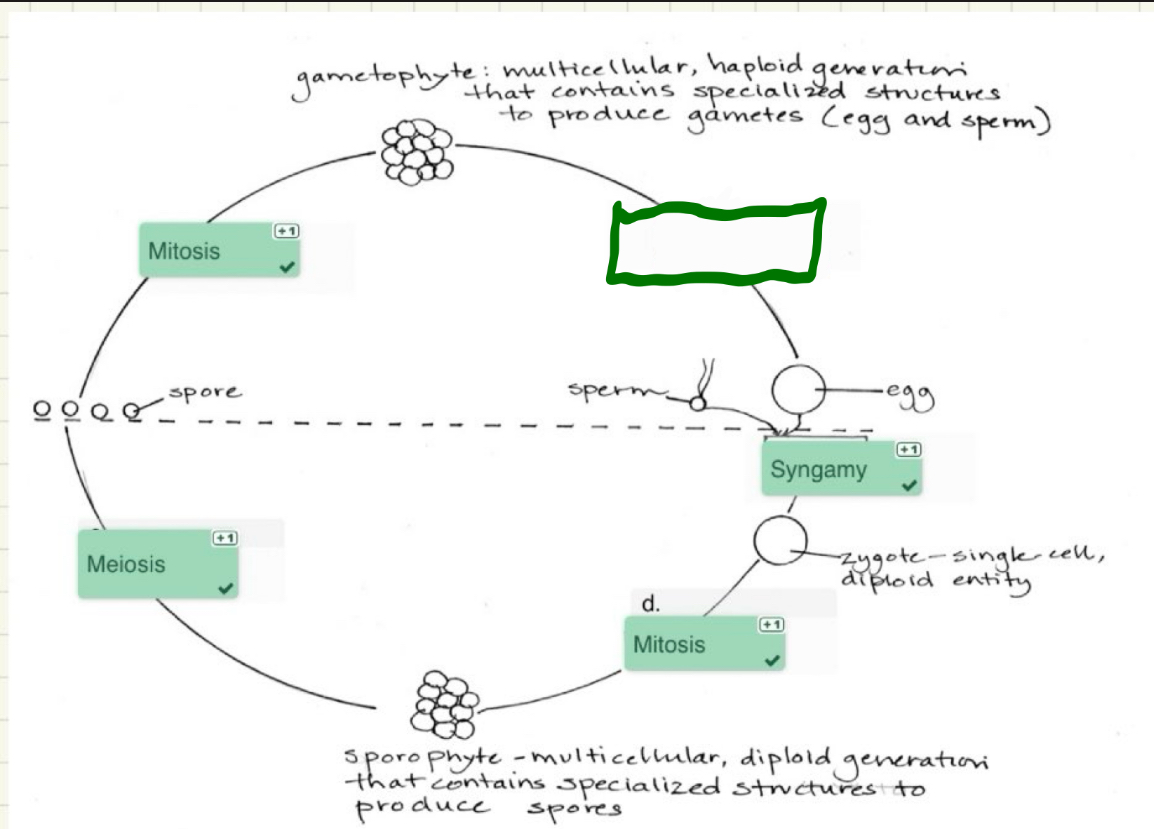
What term is missing here?
Mitosis
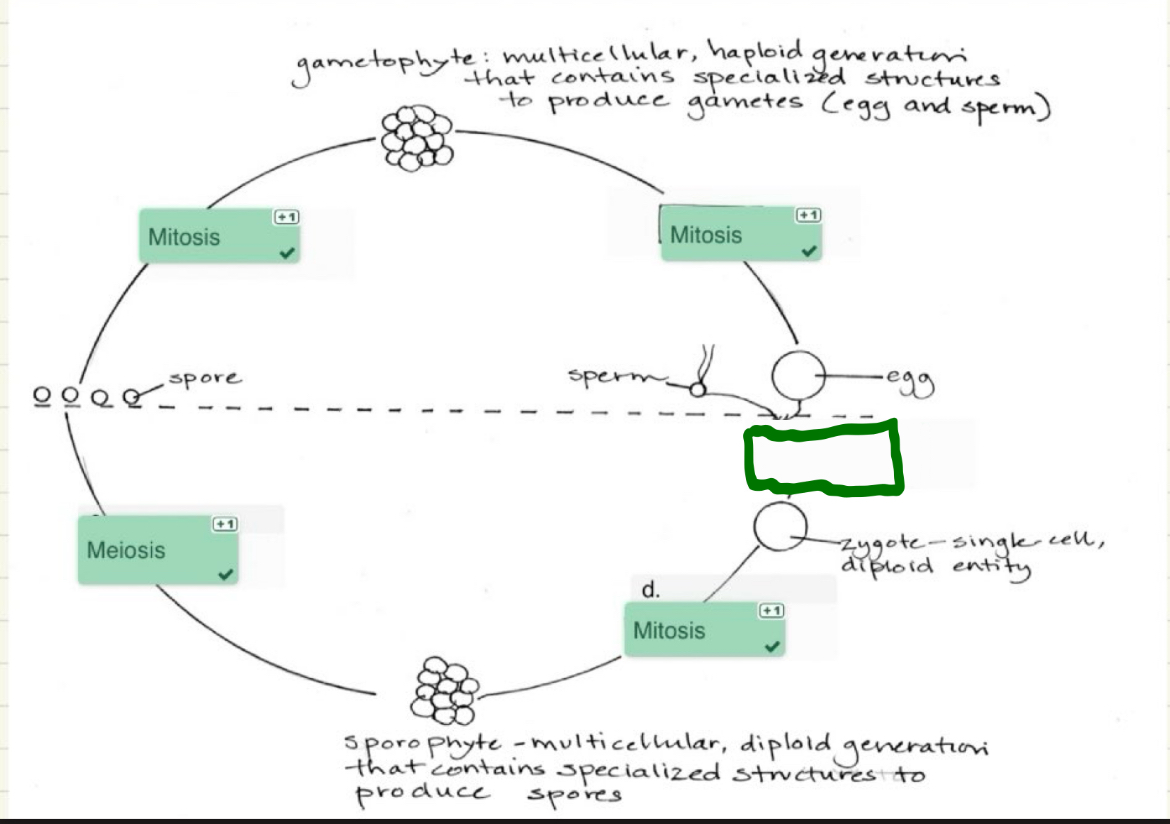
What term is missing here?
Sangamy
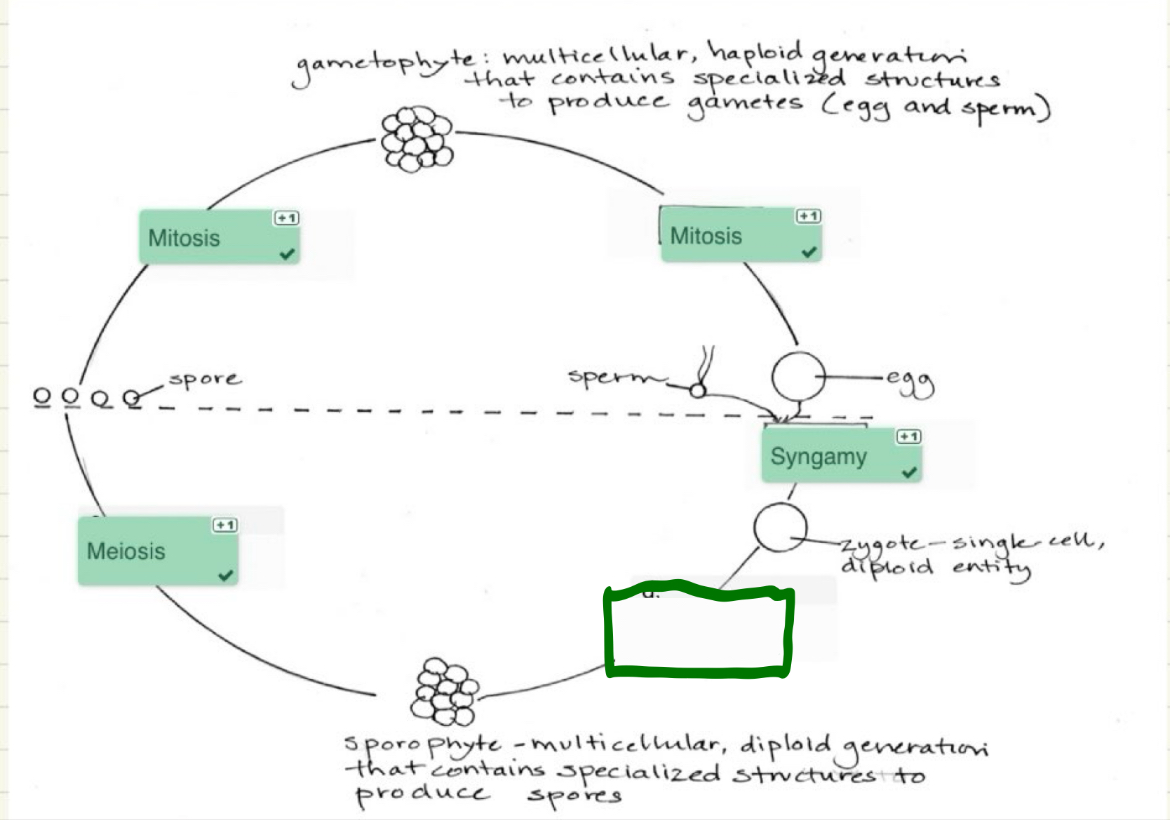
What term is missing here?
Mitosis
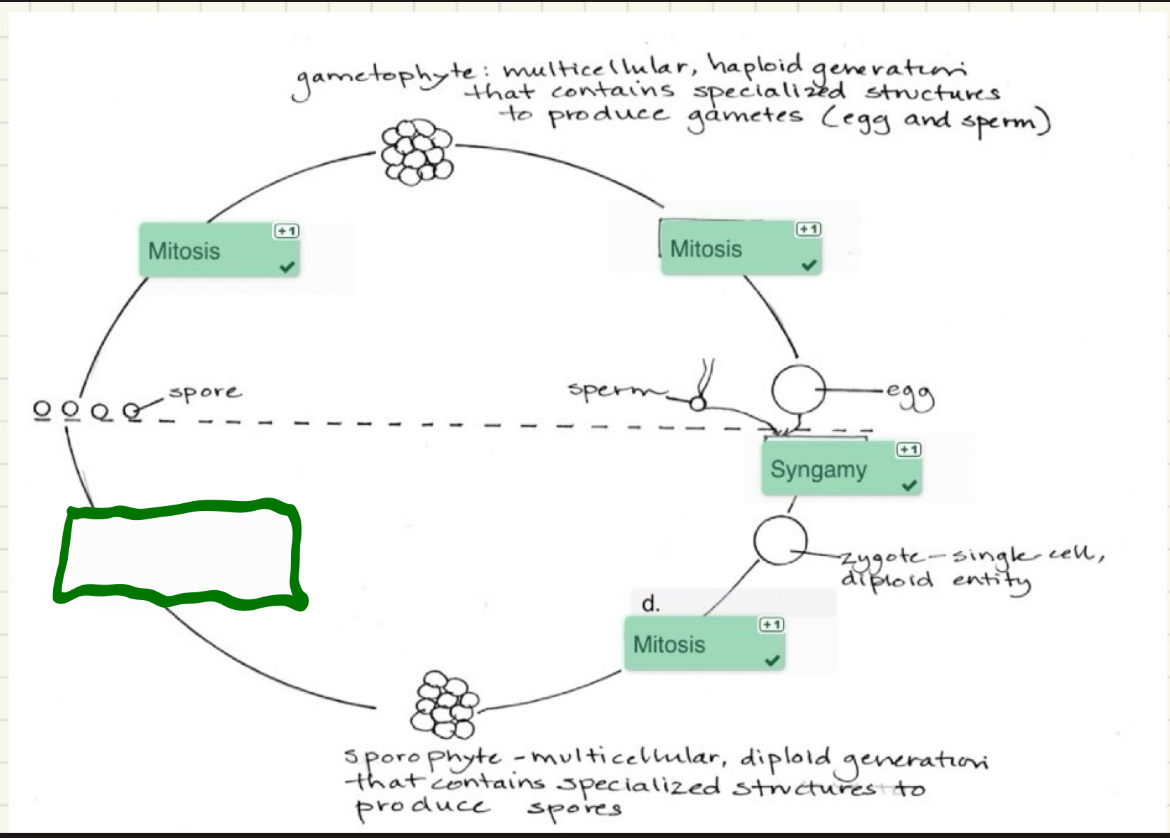
What term is missing here?
Meiosis
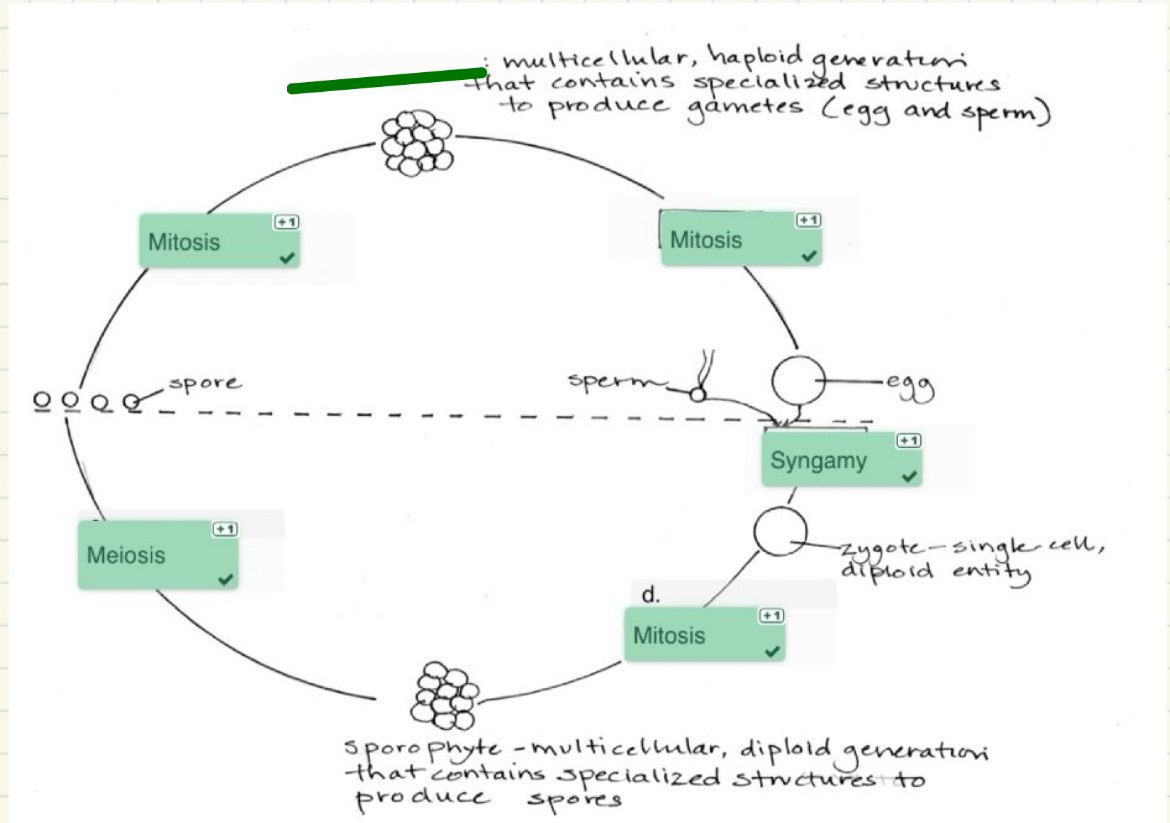
What term is missing here?
Gametophyte
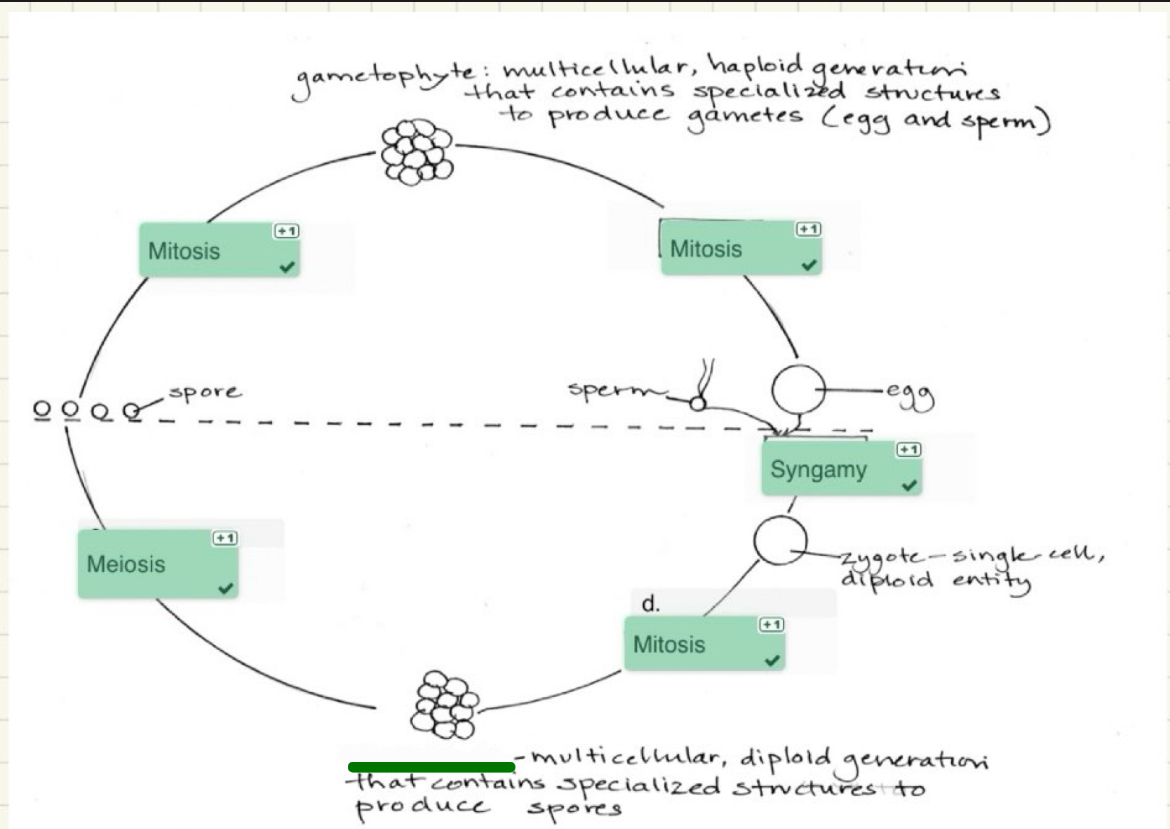
What term is missing here?
Sporophyte
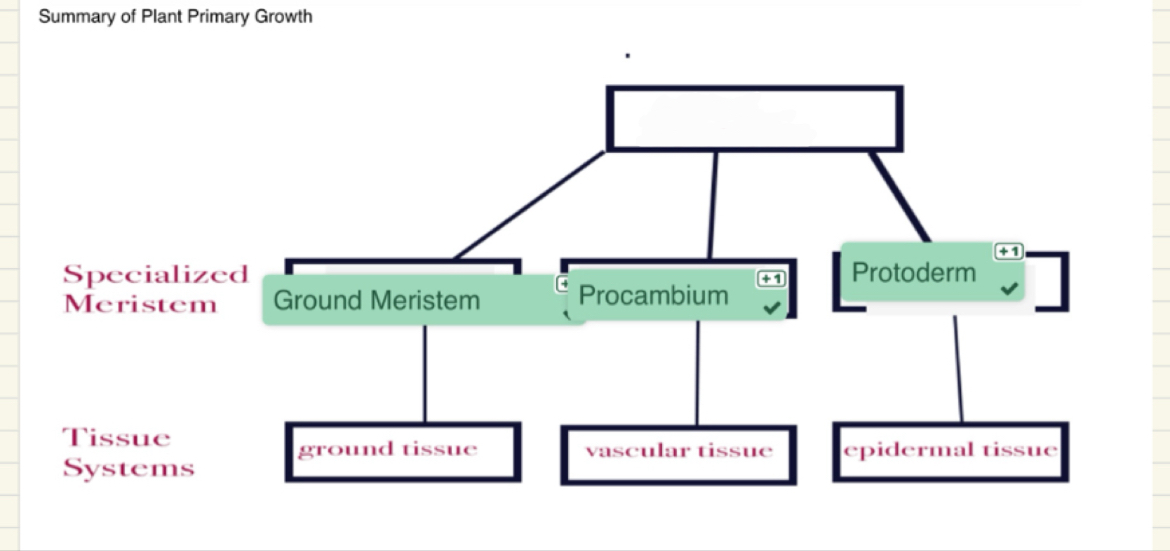
What term is missing here?
Apical meristem
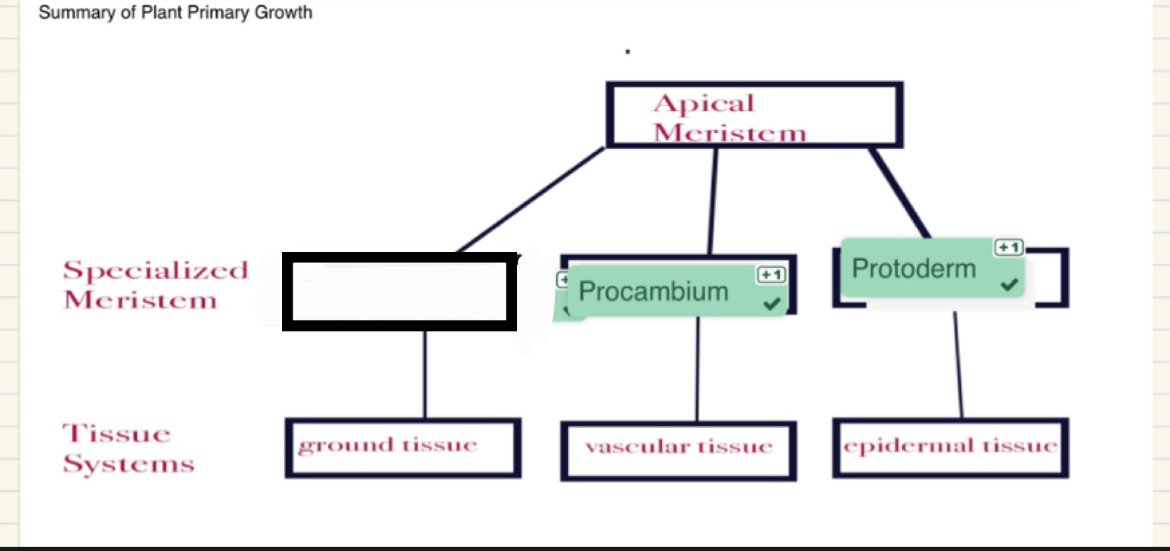
What term is missing here?
Ground meristem
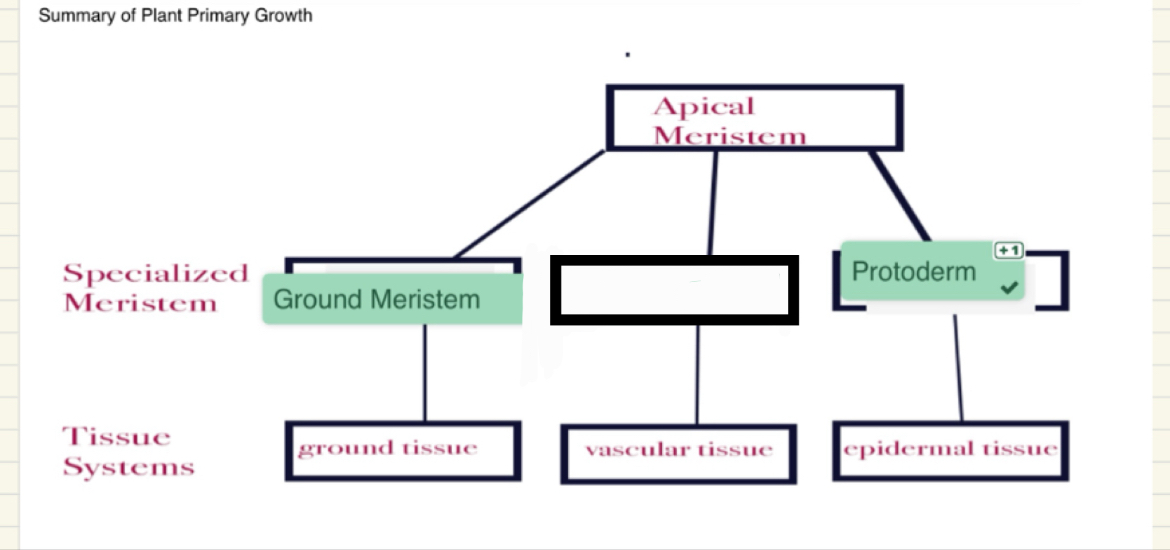
What term is missing here?
Procambium
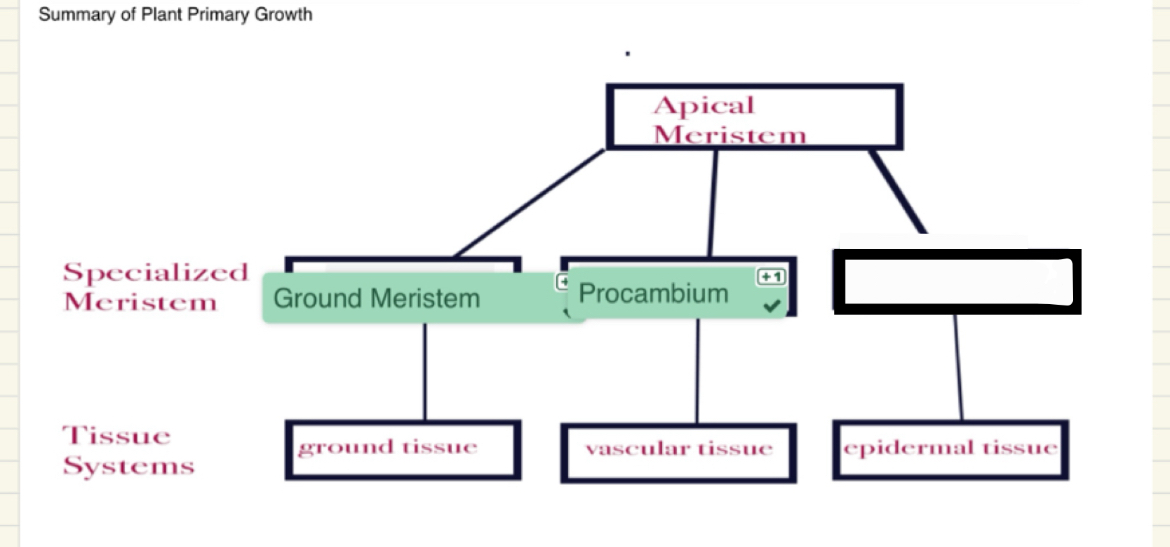
What term is missing here?
Protoderm
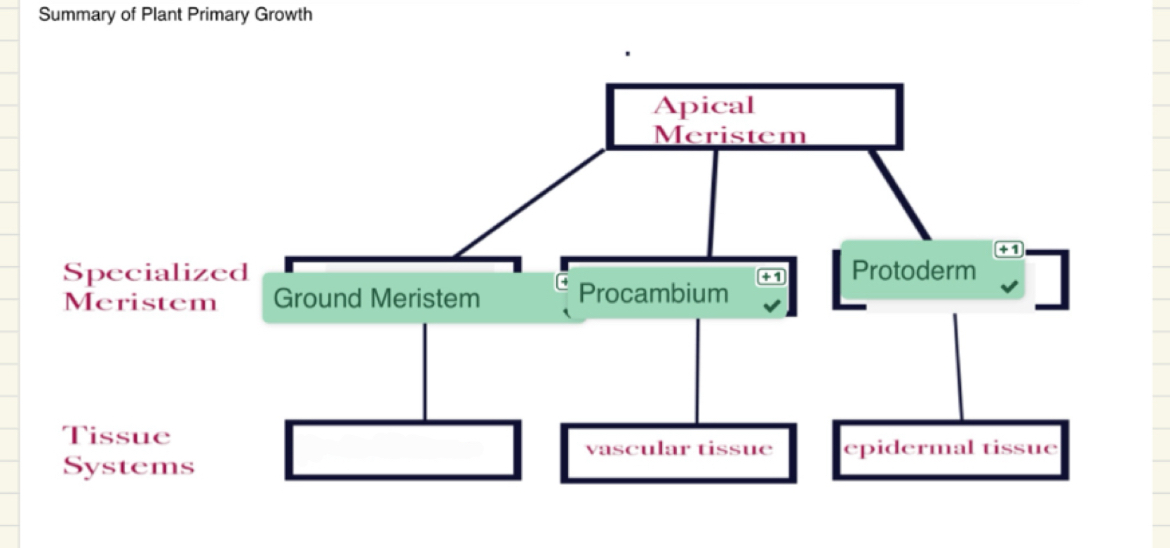
What term is missing here?
Ground tissue
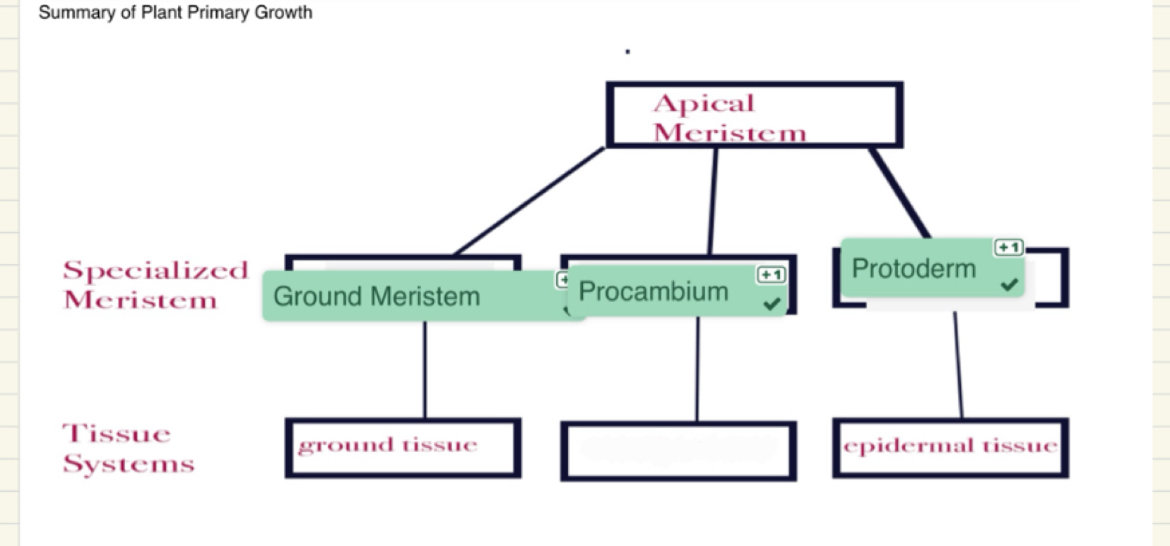
What term is missing here?
Vascular tissue
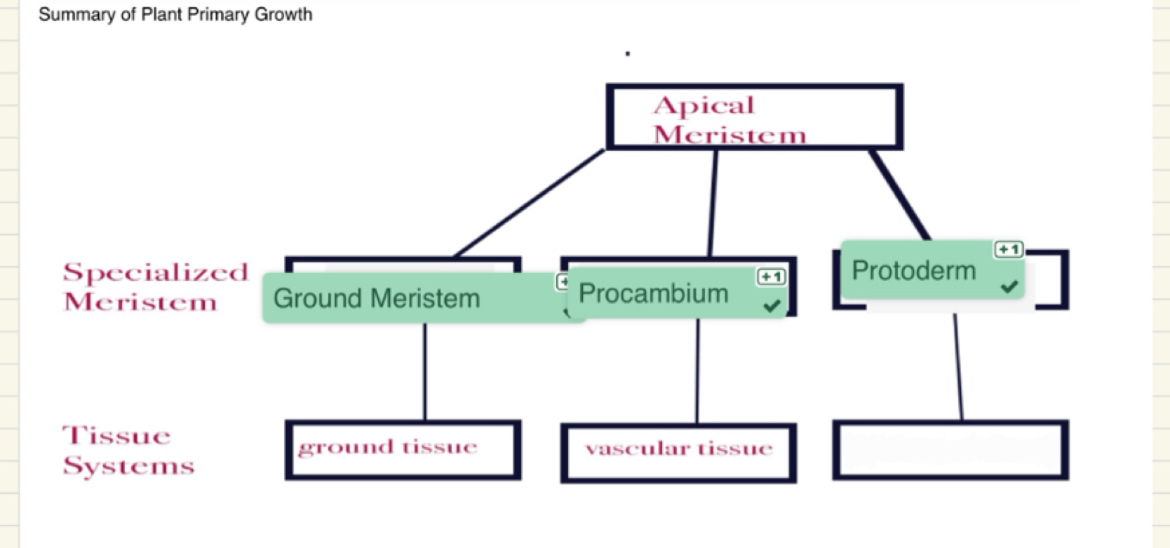
What term is missing here?
Epidermal tissue
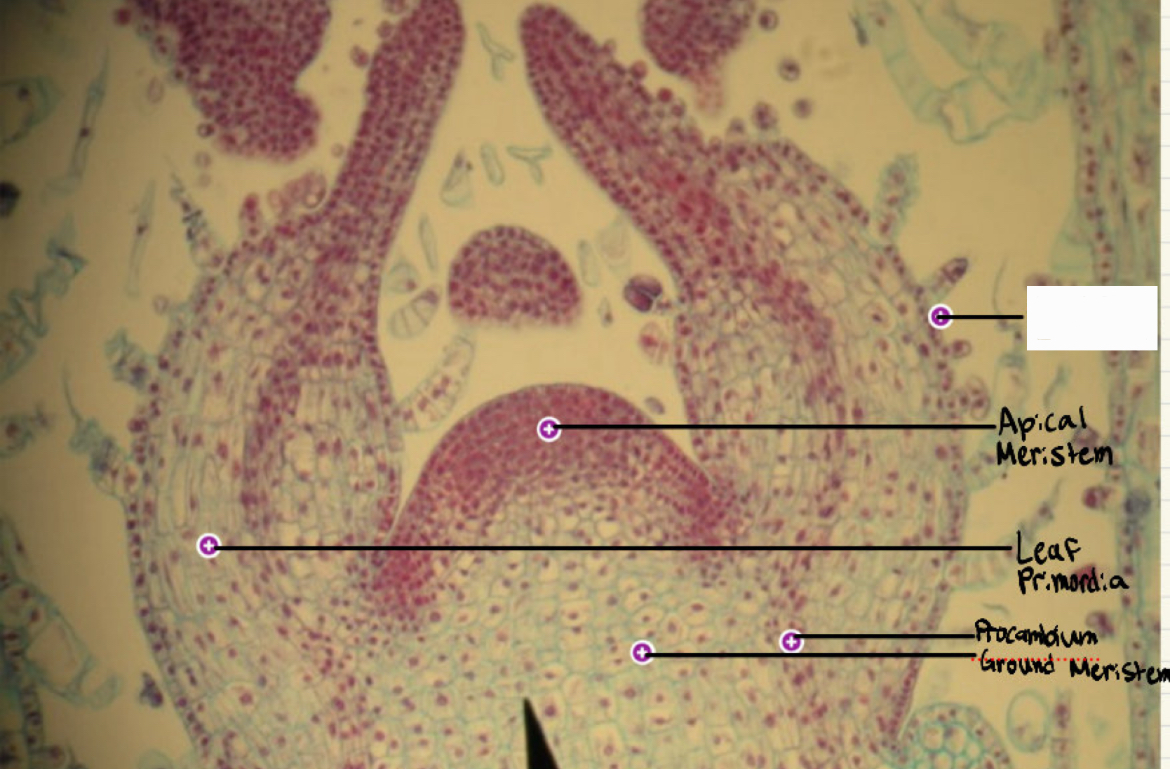
What term is missing here?
Protoderm
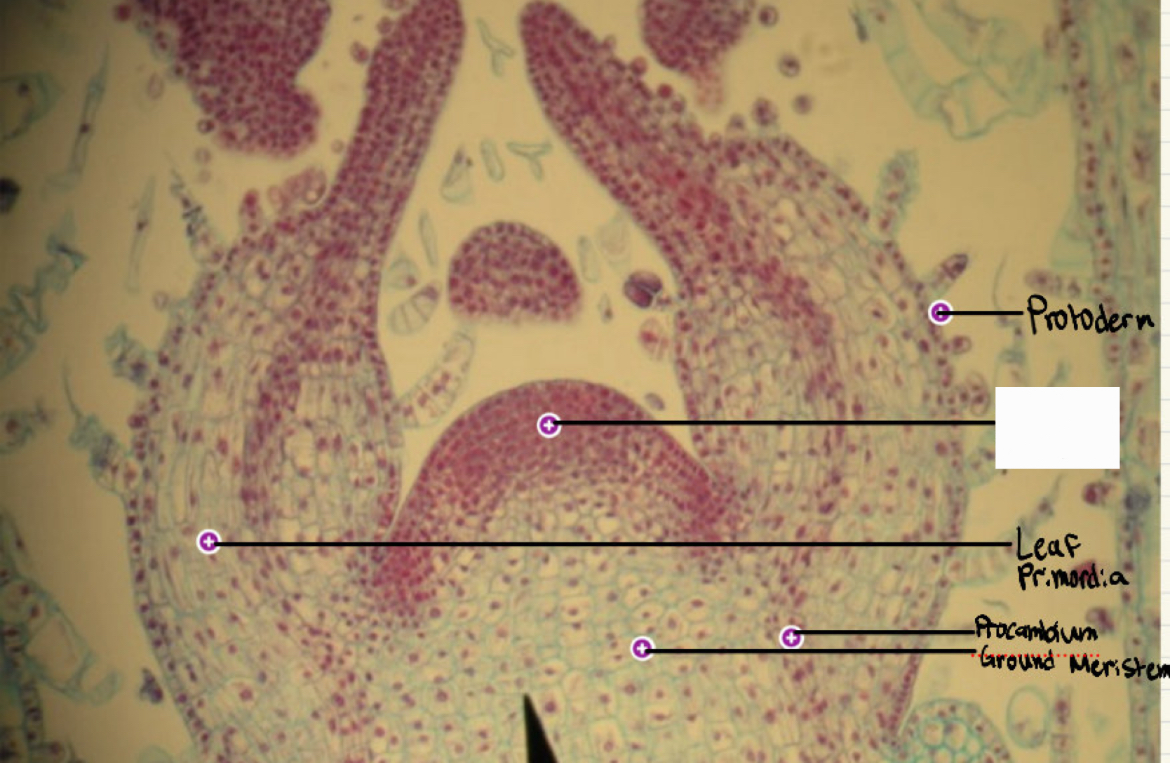
What term is missing here?
Apical Meristem
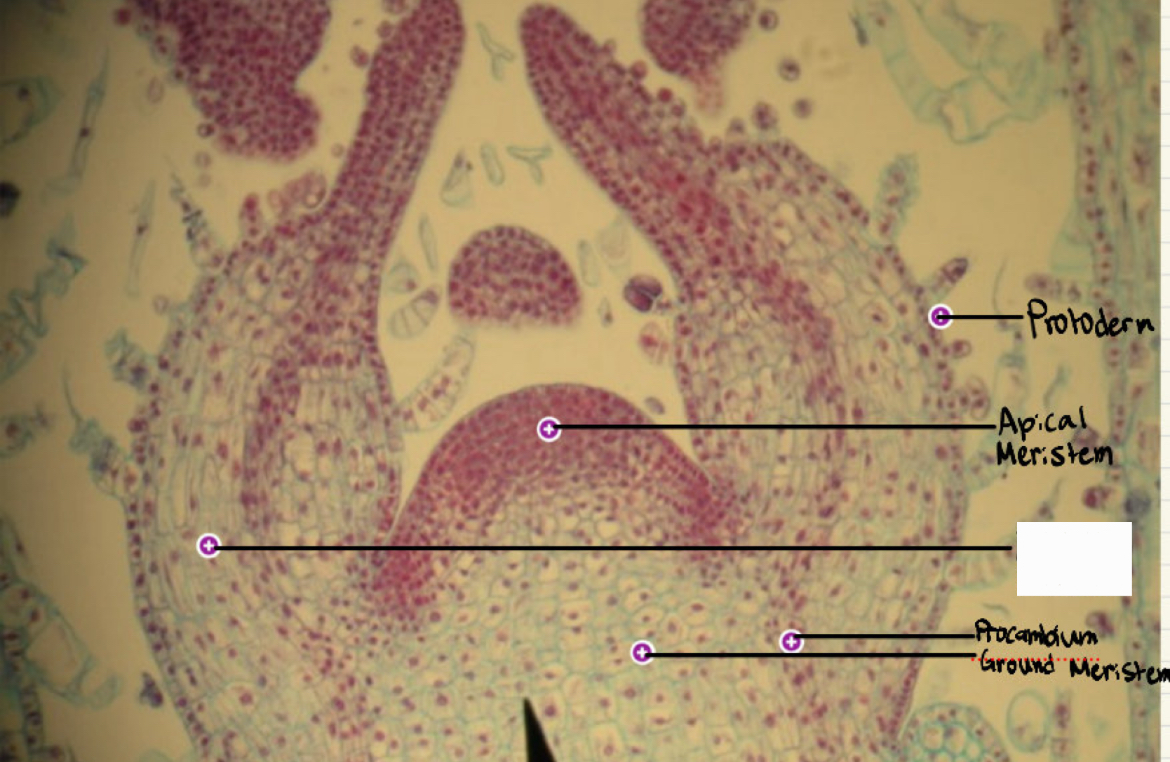
What term is missing here?
Leaf Primordia
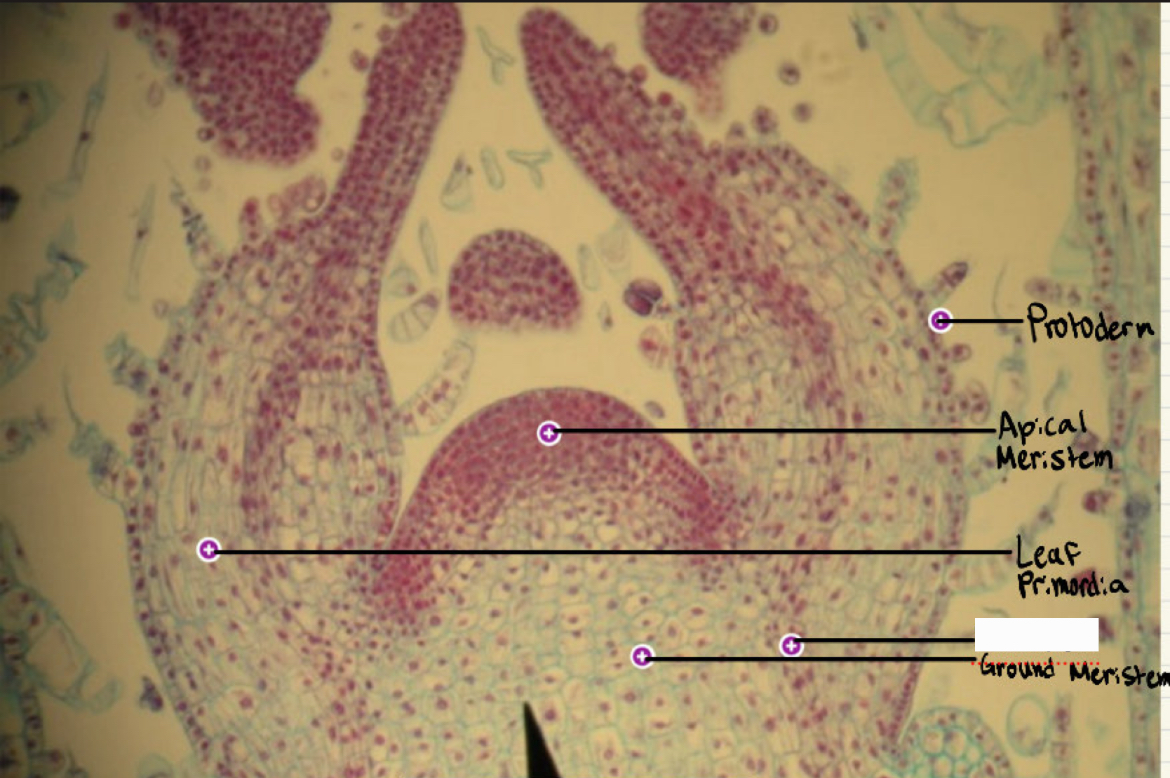
What term is missing here?
Procambium
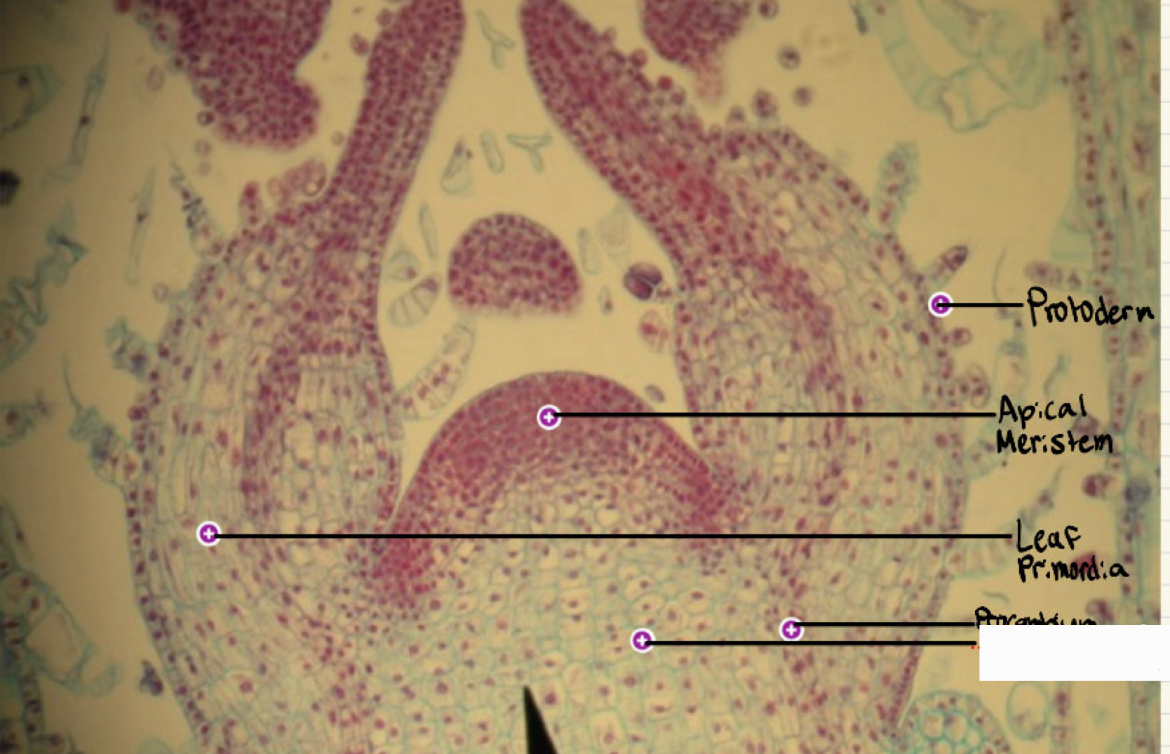
What term is missing here?
Ground Meristem
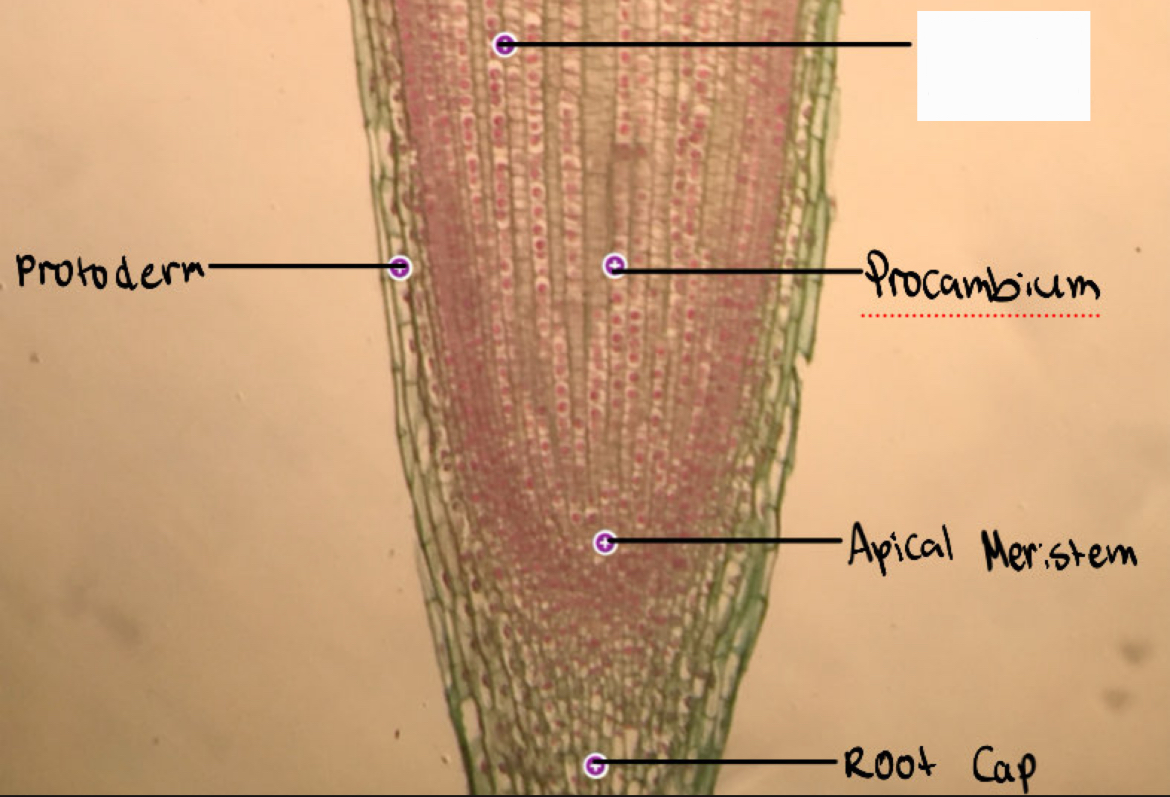
What term is missing here?
Ground Meristem
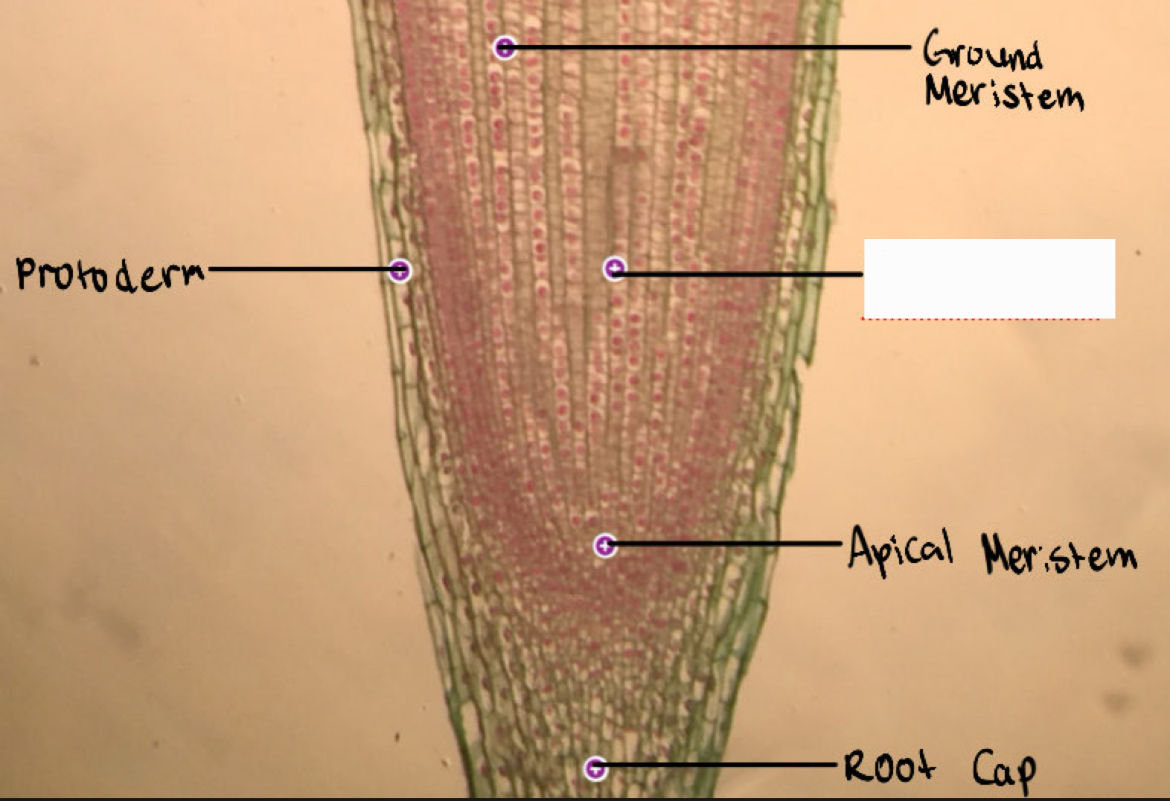
What term is missing here?
Procambium
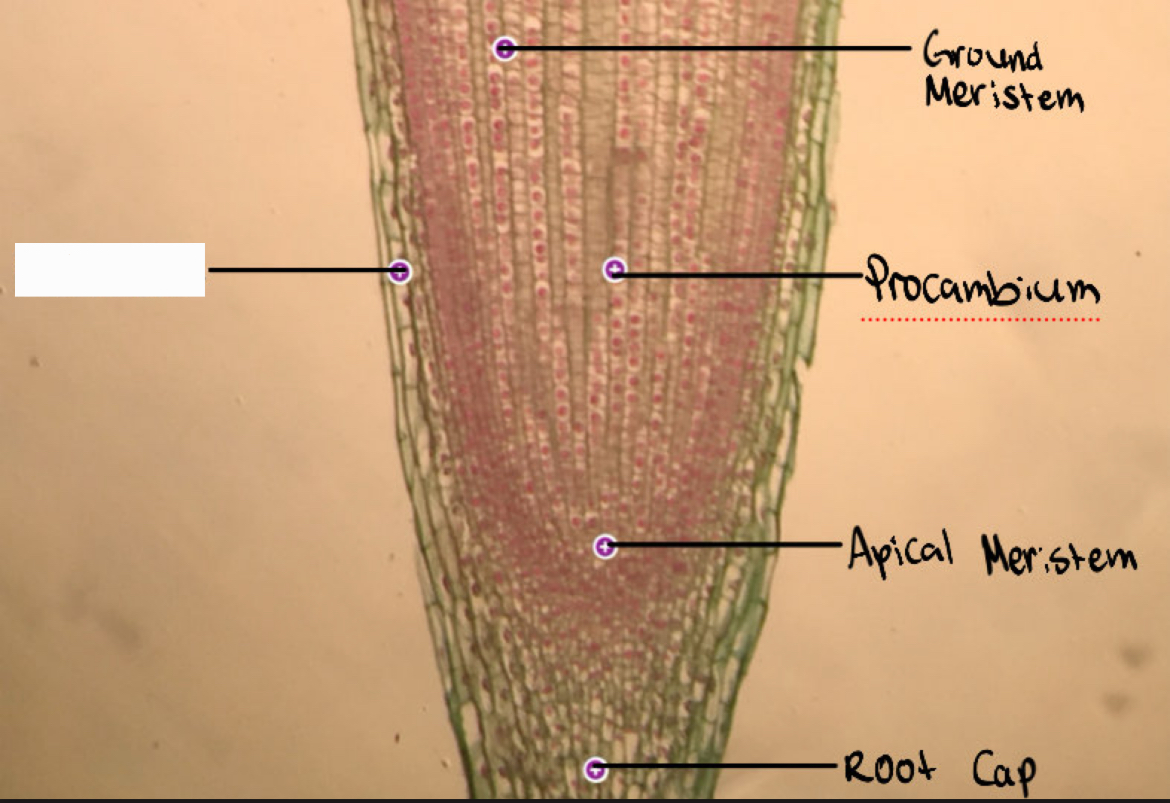
What term is missing here?
Protoderm
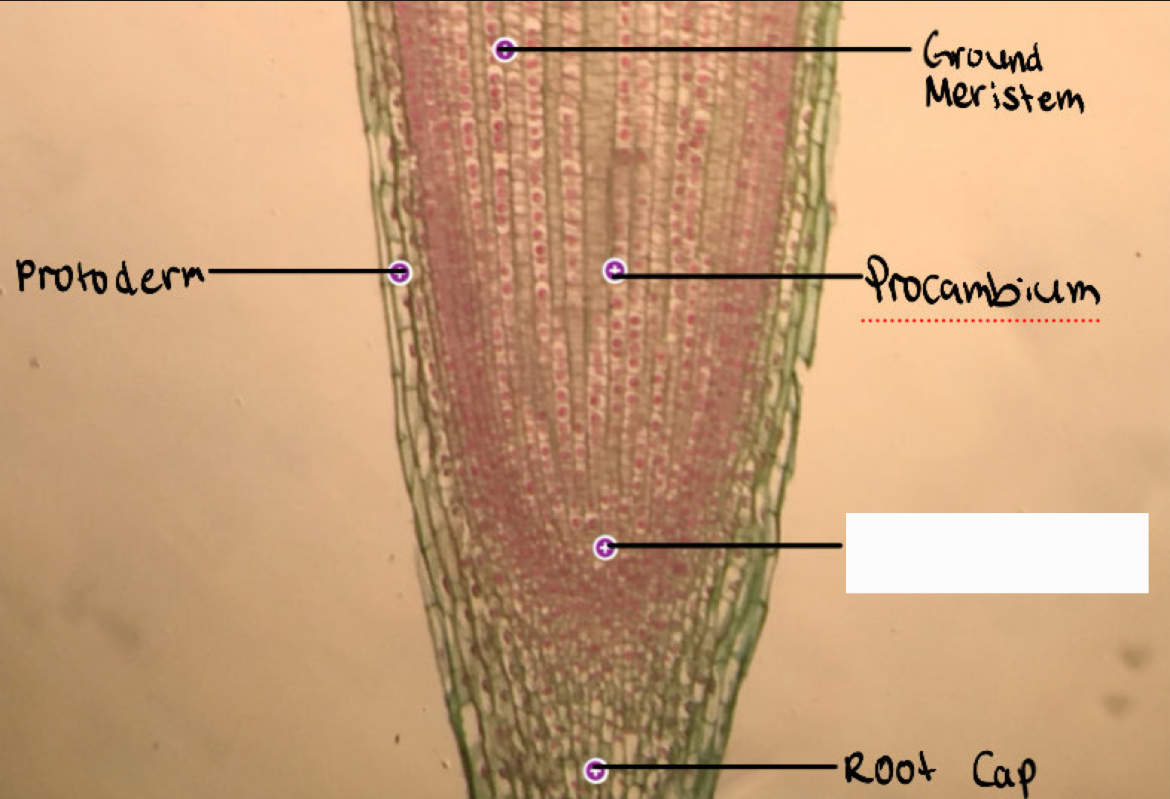
What term is missing here?
Apical Meristem
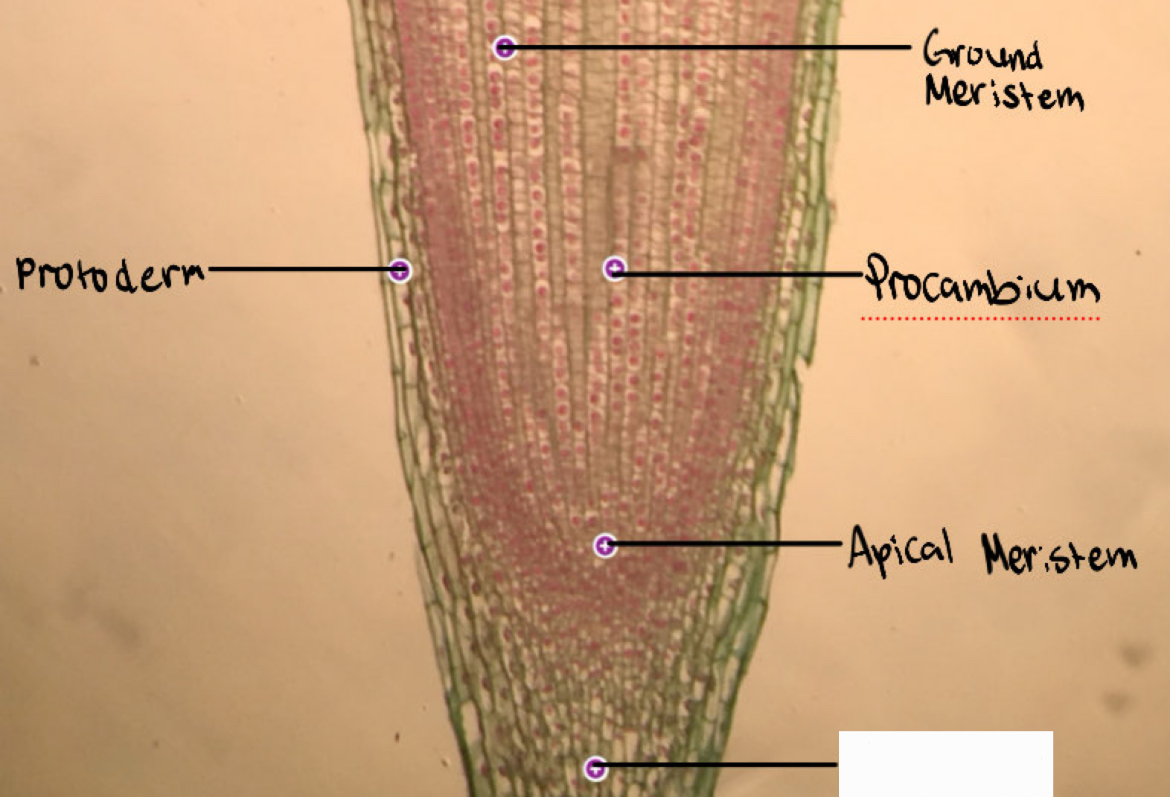
What term is missing here?
Root Cap
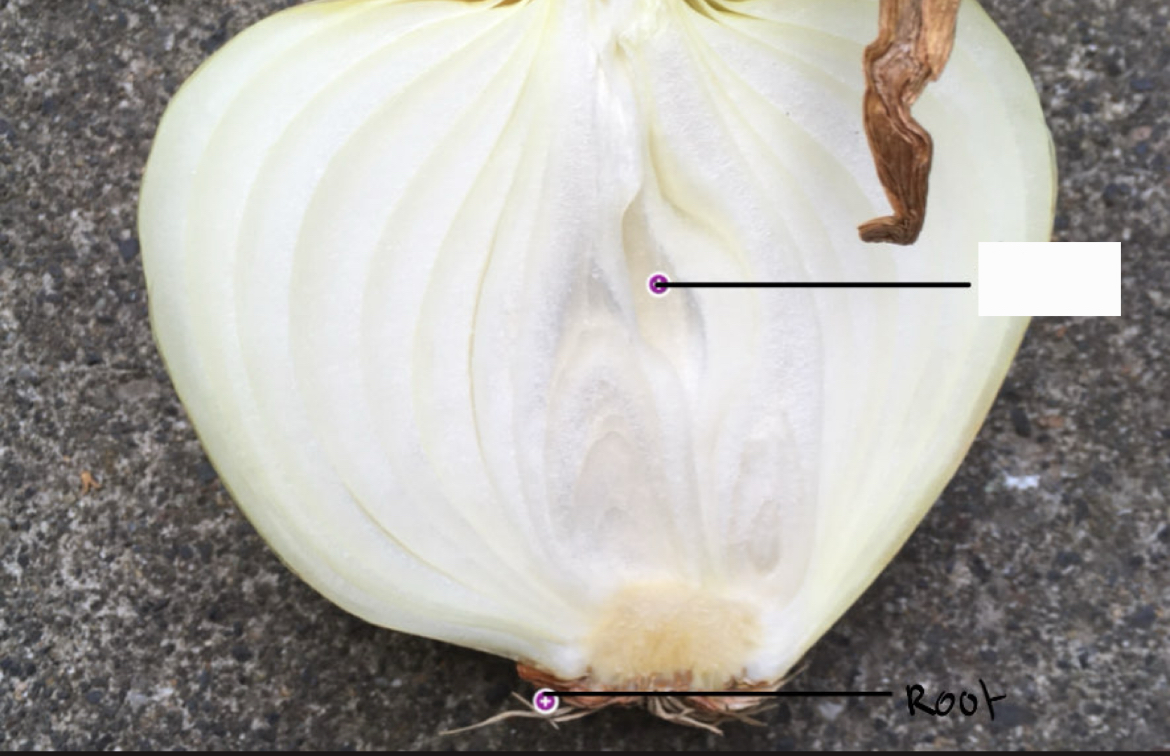
What term is missing here?
Stem
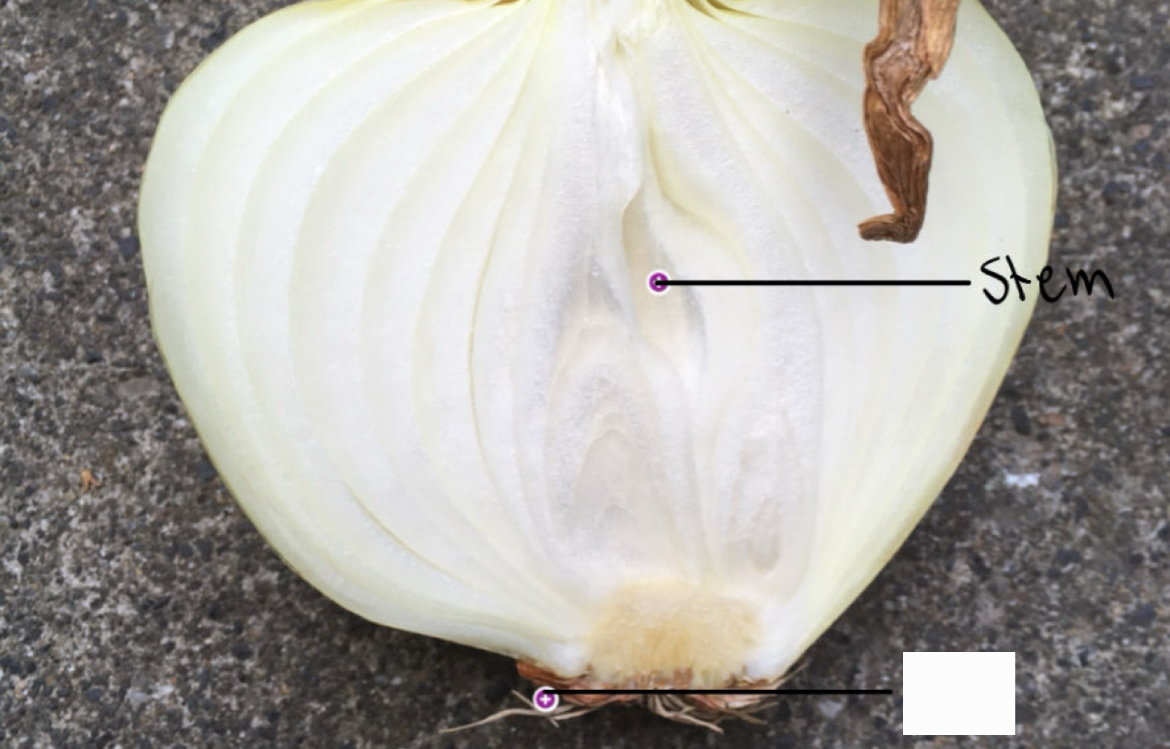
What term is missing here?
Root
What type of tissue is xylem?
Collenchyma
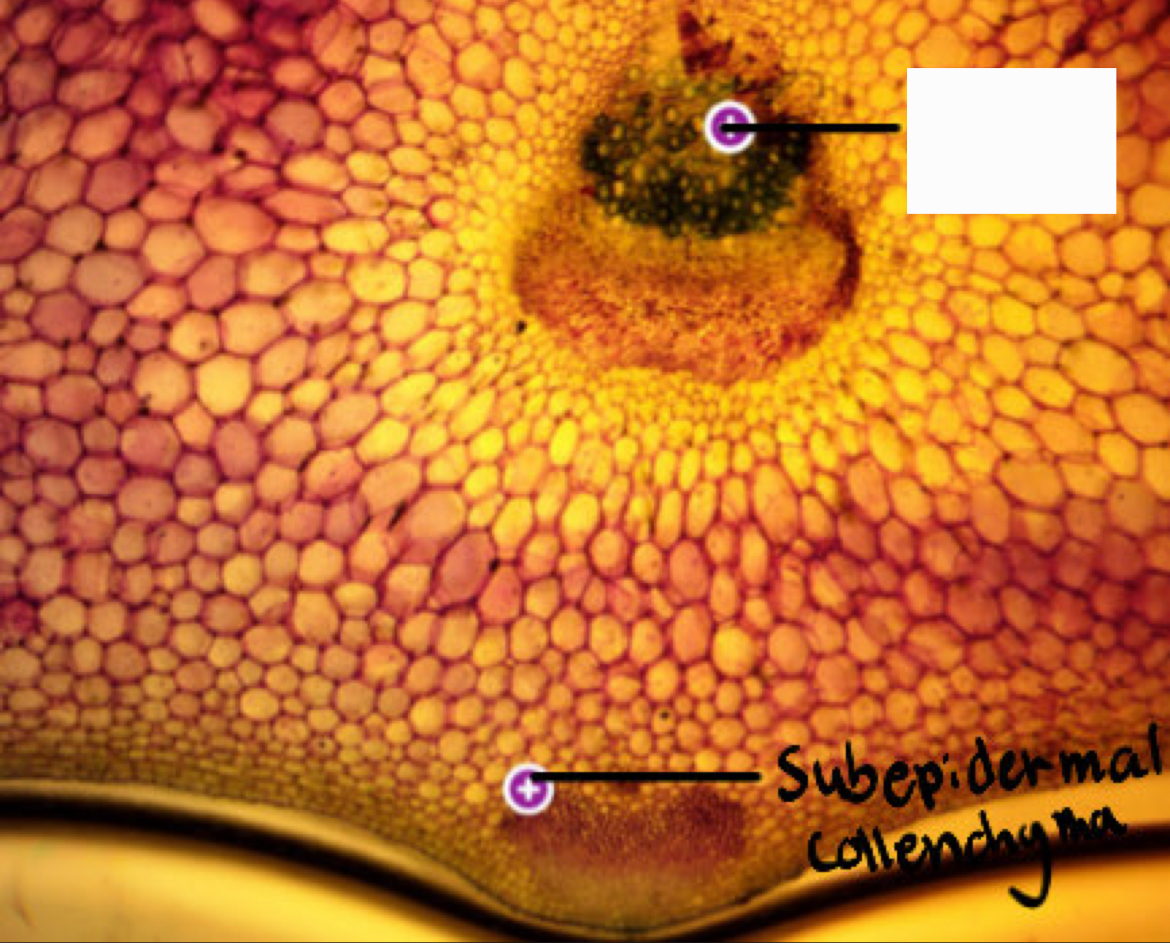
What terIm is missing here?
Xylem
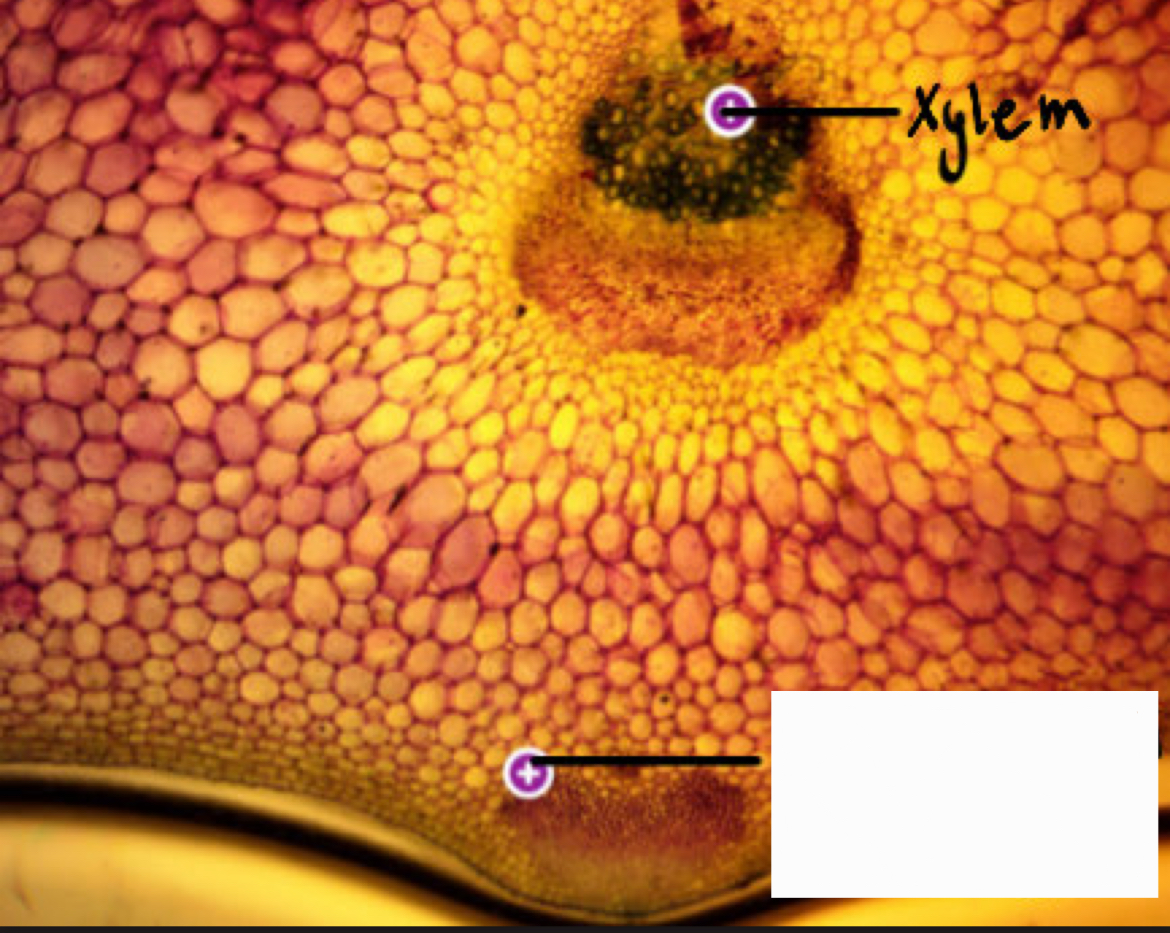
What term is missing here?
Subepidermal collenchyma